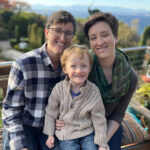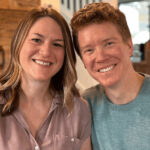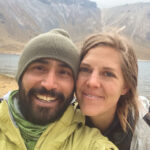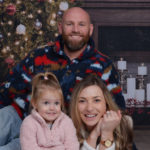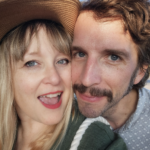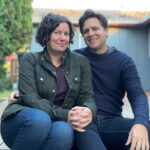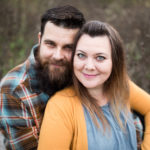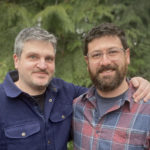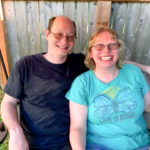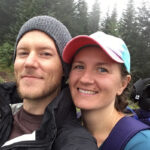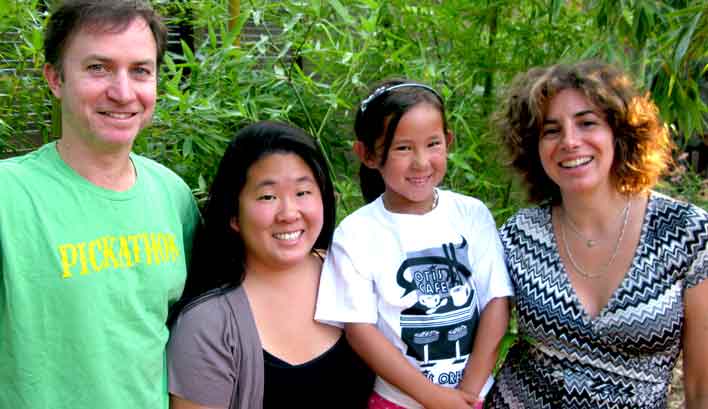By Shari Levine. “Hospitious Adoption”, Jim Gritter’s book has given our agency a new paradigm for exploring open adoption in greater depth. It has served as a beacon of hope, a light in the distance guiding us forward. Is his vision too idealistic? Not at all. We see these hospitious acts every day. In fact we’ve interviewed adoptive parents Michele Greco and Mike Banker along with their daughter Carly’s birthmother, Joanna Ames, in order to see how this has unfolded in their lives.
Shari: What were your relationship expectations of the birth/adoptive family prior to meeting them? How have those expectations changed as you have deepened your relationship with one another?
Michele: It was always my expectation to have as open a relationship as possible. I visualized and hoped for total comfort and ease with our birthmother. After we first met, it seemed pretty great and comfortable. Now, we consider each other family, plain and simple.
Mike: Over the first year we found ourselves to be so comfortable and at ease around each other that the whole family dynamic just came together kind of organically.
Joanna: I really liked them after meeting them and hoped we would remain close, but I don’t think I could have dreamed how close we would all become.
What are the necessary components to an open adoption? How do a group of relative strangers become family? It begins with:
• Noticing – the transformative effect of being visible, seen and acknowledged.
• Goodwill – giving the other person the benefit of the doubt, assuming the best and finding common ground.
• Respect – having a sense of who the other person is and having admiration for that.
• Courage – a small, steady courage. Courage to overcome fear. Courage to trust in the person, and the situation, even when you feel the most vulnerable.
• Listening … really listening. Listen to what’s being said, what’s not being said, how it’s said and what’s between the lines.
Shari: What special things do you remember doing to make the other party feel comfortable in the beginning? And now?
Michele: We tried to include Joanna and her parents in big events and also in some of the small everyday things too. I also made it very clear in the very beginning that I wanted and needed the phone, invitations etc. to go both ways. I anticipated that as a new mother I would be tired and not always on top of everything and I wanted to be sure they would do their part to keep the connection happening. They did, but were also quick to let us know that they understood and expected that there would be times when we would need our space as our little family and they wanted to know that we would take what we needed.
Mike: We treat them like family and we are completely comfortable being around each other. As with any relationship it requires work and maintenance but bringing more people into your life in a situation like adoption just increases your capacity to love and care about someone.
Joanna: I think it’s funny to use the words “visits” when talking about our family. I can’t imagine my life without Mike, Michele, and their families.
Jim Gritter reminds us that when hospitality works, people feel at home. When adoption works, children feel at home. After years of watching open adoptions take root and flourish, it seems the concept of “feeling at home” in one’s open adoption adeptly captures what all constellation members are seeking. What could be more welcoming, accepting and comforting than an open adoption relationship in which all the participants feel at home? Hospitious adoptions embrace everyone equally. “We/they” thinking simply can’t exist when everyone feels at home. In this model, nobody has rank on anyone else. This is vital because if a “we/they’ split exists between the birth and adoptive families, it will exist in the child as well. It will make integrating the two halves of the child’s identity- the genetic half and the adopted half- very challenging. Open adoption is about connecting families, not replacing them because they are both invaluable to the child.
Shari: Do you treat your open adoption partner as you would any other friend or relative? How is it the same or different?
Michele: Yes, I believe I do. Although in some ways it is different because we share a deep connection in how we feel about Carly. A sort of deep parental pride and love that one can only feel about their child.
Mike: In many ways our relationship with them is closer than a friendship and different than our relationship with our relatives because we have gone through a powerful process of intentionally creating a family relationship around the birth of a child. You realize early on when you have a child that you become closest with the people in your lives who truly love and care about your little one.
Joanna: I honestly see them more than I see my direct relatives.
What stands in the way of hospitality? Fear. Fear of rejection, imposition, change, commitment, lack of control, judgment, failure. Fear is a normal human reaction. But open adoption gives us the opportunity, and the challenge, to face and move beyond our fears, rather than becoming entrenched in them. How do we overcome our fears? By seeking education, communication, support, self-forgiveness, trust and vulnerability. By having the courage to be vulnerable with the birth/adoptive family, we can see how interdependent and connected we truly are. One cannot be a birth parent, adopted child or adoptive parent apart from the contributions of the other. These connections become a fundamental part of each person’s identity.
Shari: How have you personally benefited from involvement with your child’s birth/adoptive family? What have you gained from them or learned that you would not otherwise know?
Michele: I have grown in too many ways to name or possibly even identify at this one time in my life. Becoming a parent is an experience that expands one’s capacity for love. Becoming a parent by way of open adoption, does this too, but exponentially. I have learned that love overcomes fear. We figured out pretty quickly that we had the most important and amazing thing in our lives in common. It is hard to get much more connected then that.
Joanna: As an adopted child myself, I think it’s been wonderful for me to be able to see her practically whenever I want – never will I have the “what if” types of questions. I have gained a big, loving family.
Shari: What guidance would you give to new open adoption participants as they begin their relationships?
Michele: Be honest with yourselves and everyone involved about your feelings and then trust that your heart is big enough to do this, until it gets just easy.
Mike: It is so important for your adopted child to know her story and be comfortable and proud of it. Keeping a relationship with her birth family is paramount to that, so be as welcoming and hospitable as you know how to be with them and you will make everyone feel at home with the relationship.
One cannot be a birth parent, adopted child or adoptive parent apart from the contributions of the other. These connections become a fundamental part of each person’s identity.
Shari: What benefits to your child have you noticed as a result of them witnessing this connection between you and the other family?
Michele: Carly is vibrant, sensitive, comfortable and at ease with herself and her family, her whole family.
Mike: Carly is a very confident and secure little girl. I think to feel secure every child wants to know they have family around them that loves them.
Joanna: She has a really big family that loves her to pieces.
What are the children of open adoption entitled to? For the child, “home” is a state of mind that makes room for all of the people she counts on and loves. The hospitious home welcomes and celebrates the wholeness of the adopted child. As Jim Gritter enthusiastically states, “We can do this!”
